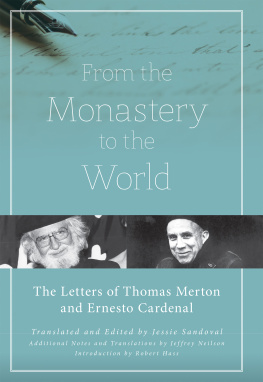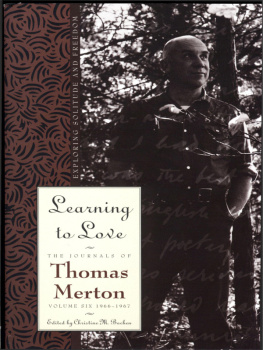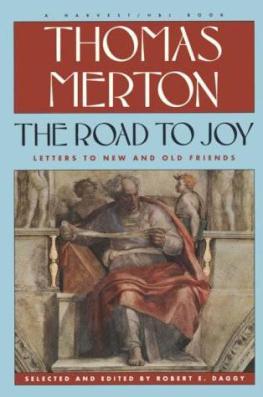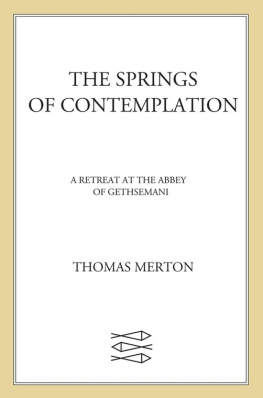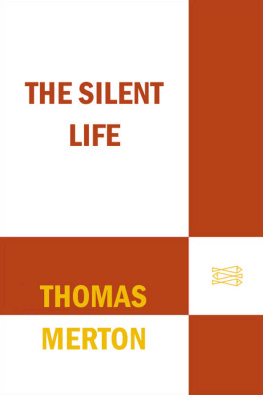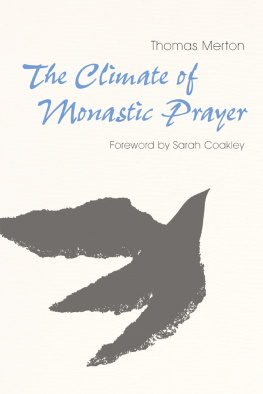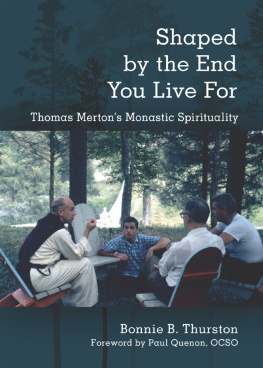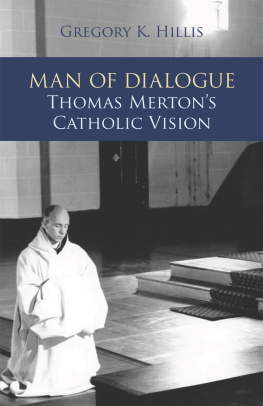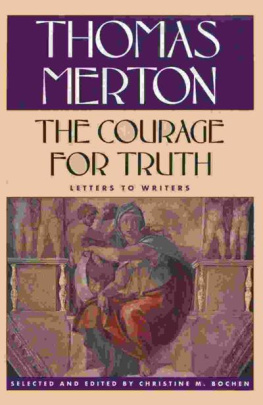The School of Charity is the third volume of the projected five-volume series of the letters of Thomas Merton. It is appropriate that this volume of letters on religious renewal and spiritual direction should be placed at the center of the series. The monastic lifethe particular form of religious life which Merton had embracedand its renewal were very much at the center of his thought and activities. If in his writing he often moved from that center to discuss other issues, invariably he saw these issues from a monastic perspective and through the eyes of a monk.
It is true that Merton had questions about the monastic lifesome of them radical, even disturbingbut they came from the heart of a monk. When he writes of the monastic life, it is his own way of living the Christian vocation that is at stake; when he talks about monastic renewal, it is about something happening in his own experience. Disillusioned at times, but never despairing, bitingly critical (especially in his later years), yet always (or almost always) creatively so, he was able to combine a lively idealism with a practical realism. He blended both into that love for the monastic life which first captured his heart when he originally visited Gethsemani and which, despite serious testing and a good deal of rethinking, never left him.
On a number of occasions when I visited the Abbey of Gethsemani, I had the pleasure of speaking with the late Dom James Fox, Mertons Abbot through most of the crucial years of his life in the monastery. On more than one occasion Dom James said to me: I never knew a more humble or more obedient monk than Father Louis. These words were not intended as an after-the-fact canonization of a recalcitrant monk by a forgiving Abbot. They are his Abbots final summing-up of the life of a monk who, though sometimes disagreeing with him, knew at the deepest level what it meant to be a monk. If some find it difficult to perceive the qualities of humility and obedience in Thomas Merton, the reason may be that they are looking only on the surface of what was deep in his heart.
We are fortunate to have Brother Patrick Hart as our mentor through the joys and frustrations of Mertons letters on monastic life and renewal. Brother Patrick was Mertons disciple and, later, secretary; he was also his friend and brother in the monastic family of Gethsemani. Multitudes of people have found in the person of Brother Patrick the same qualities of deep monastic commitment and a genuine desire to serve people that emerge from the writings of Thomas Merton. Helping us make our way through these letters is part of the ongoing service to Merton scholars and readers which Brother Patrick has offered for more than two decades, and continues to offer.
WILLIAM H. SHANNON
General Editor
St. Bernard of Clairvaux expanded and implemented the thought of St. Benedict when he called the monastery a school of charity. The main object of monastic discipline, according to St. Bernard, was to restore mans nature created in the image and likeness of Godthat is to say, created for love and for self-surrender.
THOMAS MERTON IN Monastic Peace
In the mid-forties Thomas Merton had tentatively titled one of his pamphlets The School of Charity , a projected work on the common life of Cistercians and especially the place and function of fraternal charity in the life of union with God. Although it was never published as he had planned, The School of Charity became a subtitle in a small book, Monastic Peace , which was subsequently included in the posthumous collection The Monastic Journey .
The Merton letters included here are concerned with renewal in the Church at large as well as religious and monastic aggiornamento. When I began to gather letters that would fit into this category nearly ten years ago, I found that the subjects of renewal and spiritual direction were often intertwined. Merton was sometimes seeking counsel, as in the case of the letters addressed to his Abbots, or to the Abbot General in Rome, or to some trusted friend. But more often he was simply responding to another persons written request for a word of advice and direction during a difficult period.
Although the editorial policy adopted in the two previous volumes of Merton letters has been generally followed, I have arranged these letters in chronological order throughout, for a number of reasons. First, by reading the letters in sequence one can more readily observe the development of Mertons monastic maturing over the years. It is also possible, when comparing letters written at the same time to different persons, to appreciate how often Merton adjusted his language to the sensibilities of the recipient. Salutations and closings have been omitted from the letters for the sake of space, unless something of significance warrants retaining them. It was decided to use brackets for editorial notes and clarifications, rather than to clutter the book with footnotes. Also when a short Latin or French phrase appears, a translation in English has been given in brackets. All the letters were written at the Abbey of Gethsemani unless otherwise indicated.
Many letters are addressed to religious men and women of various congregations and orders during a period of extraordinary changes in the life of the Church, as well as the updating of religious communities. When letters deal with a spiritual or moral problem, the recipients are identified with an initial, such as Sister A. or Brother B., in order to preserve their anonymity; the intrinsic value of Mertons advice is evident without any need to reveal identities.
There are a considerable number of letters written to well-known people, like Father Barnabas M. Ahern, Nora Chadwick, Etienne Gilson, Dom Aelred Graham, Father Bruno Scott James, Dom Jean Leclercq, Father M. Basil Pennington, Colman McCarthy, Archbishop Paul Philippe, Father Aelred Squire, Sister Mary Luke Tobin, Dom Hubert Van Zeller, Dom Damasus Winzen, and Father (later Cardinal) Hans Urs von Balthasar, among others. Of course, there were many more less well-known monks and nuns from the United States and other countries who corresponded with Merton in regard to renewal and at the same time brought up questions of spiritual direction. The majority of the letters were written to monks and nuns who follow the Rule of St. Benedict, mainly Benedictine and Cistercian, but also some Camaldolese and Carthusian hermits. Women and men from active religious communities, such as the Dominicans and Franciscans, also availed themselves of Mertons counsel during the troubled times following Vatican II.
It seemed convenient to divide this volume into three parts, which can be seen as the major segments of Mertons monastic years. The very first letter was written by a youthful Tom Merton from Olean, New York, where he was teaching English at St. Bonaventure College (later a university). He had made a retreat at Gethsemani on the recommendation of Dr. Daniel C. Walsh, his former teacher at Columbia University. Merton was deeply impressed by the experience and wrote enthusiastically to the Abbot, Frederic Dunne, expressing his appreciation of the contemplative life as lived at Gethsemani, and enclosing a stipend for several Masses to be offered for my particular intention. By the end of the same year he would return to Gethsemani, arriving on December 10, 1941. He entered the novitiate on December 13, the Feast of St. Lucy, given the new name of Frater M. Louis, and a white woolen postulants robe and cloak.


